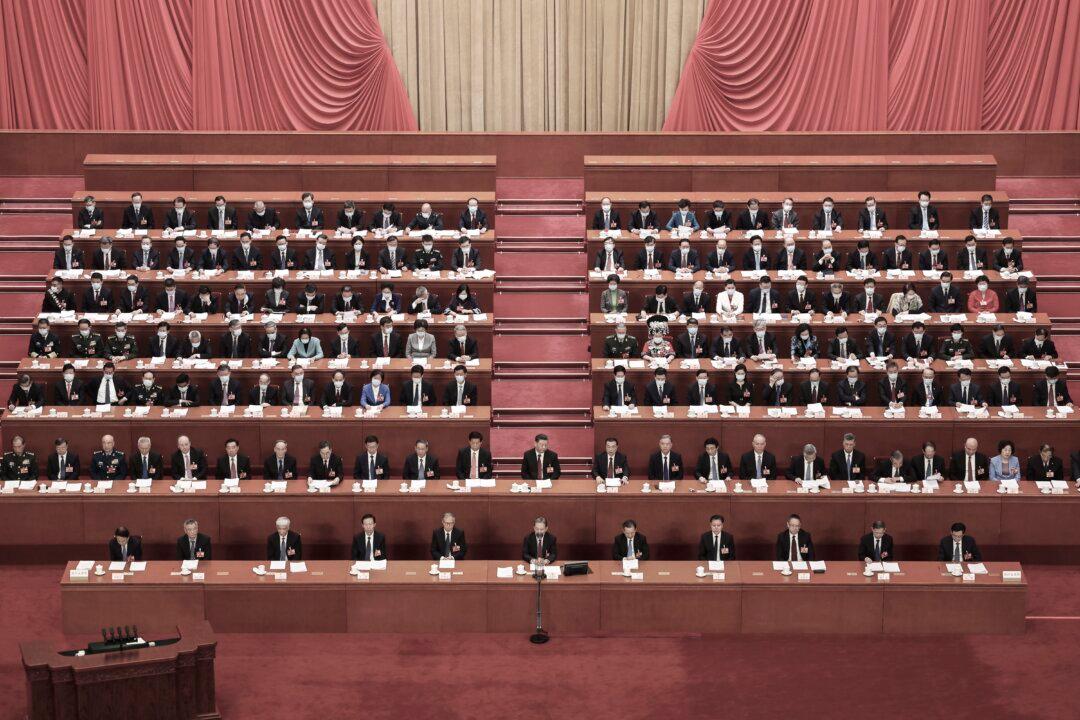Pro-Palestinian protests erupted on several campuses across the United States last month. By early May, the movement had spread rapidly to nearly 100 campuses.
Protesters occupied campuses and office buildings, disrupting normal university operations and even preventing Jewish students from entering the premises. Their demands were clear: an end to U.S. support for Israel and for these universities to sever all ties with the Jewish state. At least 2,400 people have been arrested since protests began at Columbia University in April.
Who are these pro-Hamas supporters? What forces are driving this movement? What are the implications of these events for the future of the United States?
‘A Deeply Organized Movement’
Fang Wei, a social analyst and contributor to the Chinese edition of NTD, said on the show that he would summarize the protests as “three major organizations, three major funders, plus a training camp and a number of intermediary organizations that funnel money to cover up the real funders.”“When this round of student movement first emerged, Americans were very surprised. It was because there had never been such an open display of anti-Israeli and pro-Palestinian forces in the United States before,” Mr. Fang said.
“This anti-Semitic activity has come out of the blue, and more than half of the protesters occupying university buildings or demonstrating in encampments on many campuses are not students at that school, and the leaders of the demonstrations are traveling from campus to campus,” he continued.
“The real identities of some of these so-called student leaders have been identified, and they come from a specialized training camp called the US Campaign for Palestinian Rights,” he said, adding that the campus protesters are reportedly paid high hourly wages for their work and provided with good food.
According to Mr. Fang, the police later concluded that three major organizations were behind it. The main one was National Students for Justice in Palestine, which is funded by George Soros and has chapters in over 200 schools in the United States.
“The three funders are Soros’s Open Foundation, another is the Rockefeller Brothers Fund, and another is a former Wall Street bigwig,” he claimed.
He went on to say that funds are transferred through intermediary organizations to conceal their origins.
“So I don’t think it’s an exaggeration to call the forces behind this a ‘black hand.’ This is a deeply organized movement,” he commented.
According to Mr. Fang, this movement should be seen as a profound wake-up call for Americans.
‘From the River to the Sea’
Guo Jun, president of the Hong Kong edition of The Epoch Times, said on “Pinnacle View” that demonstrators on campuses shouted the slogan “From the river to the sea,” which the U.S. House of Representatives passed a resolution condemning it as an anti-Semitic slogan.She explained that it comes from a Palestinian slogan advocating nationhood, and Palestine is the area between the Jordan River and the Mediterranean Sea.
“The United Nations Resolution of 1947 divided the area into two states, one Jewish and one Arab. However, the Arab countries did not agree, so when Israel was established, the Arab countries immediately united to attack Israel. Their slogan meant that from the Jordan River to the Mediterranean Sea, there could only be one country, an Arab country, with no place for Israel. Therefore, this slogan is essentially anti-Israel, and after Israel was established, the Arabs used violence to oppose it and openly declared their goal to eliminate Israel and wipe it off the map,” Ms. Guo said.

In her view, the slogan implies genocide, and “many young people in the United States do not care much about history and probably do not know the origin and true meaning of it.”
“The targets of Islamic extremist organizations are not only Jews but also Christianity and modern Western civilization,” Ms. Guo said. “I believe young people on American campuses are the beneficiaries of Western liberal democracy. It is both contradictory and ridiculous for them to chant such slogans, to chant slogans that aim to eliminate the social goals they pursue.”
She pointed out that the history courses taught in the United States, from middle school to university, don’t delve into communism.
“For example, how should we understand the evils of communism? How should we understand the real world? These are questions that young Americans are not very clear about,” she said.
Ms. Guo claimed the core members of the anti-Semitic movement this time are the same as those in the Antifa movement four years ago, whose real goal is to oppose the United States and capitalism.
Anti-Israel Movement Is Second Front for Hamas
Mr. Fang spoke of the anti-Vietnam War movement of the 1960s and 1970s, another significant student movement in the United States.“Even today, many Americans may not fully understand the origins and development of that movement. Based on my own research, the anti-Vietnam War movement was the second front opened by the communists in the United States,” he said.
He claimed that after the Gulf of Tonkin incident in 1965, when the U.S. Army entered Vietnam, the Viet Cong could not resist such a strong U.S. military force, so they opened a second front in the United States.
“This was the real reason why the U.S. Army was defeated in Vietnam at that time, and it was also a hidden thread behind all the chaos. But there are many differences between the movements then and now,” Mr. Fang said.
First of all, the scale of the anti-Vietnam War movement was much larger than the current movement. It expanded from college campuses to the streets, culminating in the largest gathering, a Washington rally that drew hundreds of thousands of participants.
“The purpose and demands of that rally were obvious: the withdrawal of American troops from Vietnam, and the demonstrators claimed that the Vietnam War was a war of the rich,” Mr. Fang continued. “In fact, the Vietnam War was a perfectly just war against communism, but the anti-war activists clearly stated that we can’t accept this war, and we need to get the troops back.”
According to Mr. Fang, the pro-Palestinian student protests that were organized were relatively simple. The student movement’s purpose and demands were the same as those of the anti-Vietnam War movement, he said, but the demonstrators expressed them in a very ambiguous way.
“These demonstrations took place while Israel was attacking Rafah, which was the last stronghold of Hamas in Gaza. When the Israeli army was so overwhelmed and advanced into the critical war zone, Hamas had no way to resist. Suddenly, a wave of student protests in the United States ignited campuses across the country.
“In my opinion, this is another form of the anti-war movement, hoping that the riots ignited in the American campuses would create a kind of national pressure in the United States, which would then be passed on to Israel through Joe Biden, so that Israel could be asked to rein in its war efforts, allowing the Hamas to survive,” Mr. Fang said.
He pointed out that the anti-war movement between the 1960s and 1975 was a great success for the protesters because the United States, despite being a superpower, was finally defeated in Vietnam.
“But can the same goal be achieved this time? I do not think so because Israel is determined to fight to the end, regardless of whether the United States supports it. If Israel can achieve its goal quickly, in the next week or two, and after the entire Gaza Strip is cleared of Hamas, the student movement on the American campuses may soon disappear,” he concluded.







